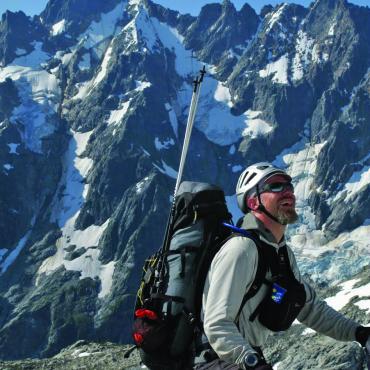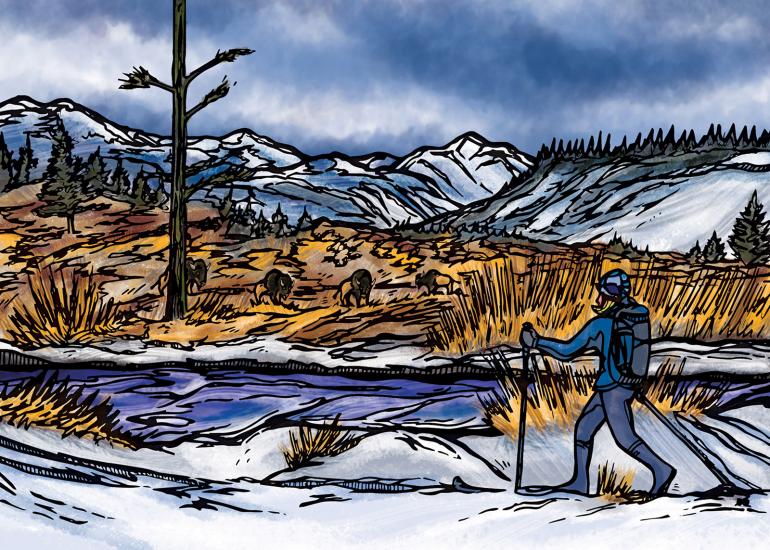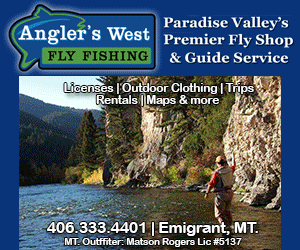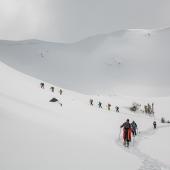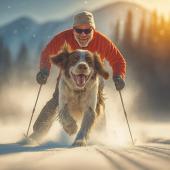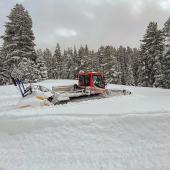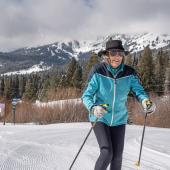Into the Open
A beginner’s guide to low-angle touring in the Gallatin corridor.
US Highway 191 travels south through the tight, scenic, and potentially dangerous Gallatin Canyon along the Gallatin River, famous for fly fishing and whitewater rafting. Most months of the year, climbers can be seen dangling off steep crags, but in winter, this lengthy corridor opens up a huge array of options for two other Montana pastimes: Nordic skiing, and “old-school” touring, the latter of which is typically done on metal-edge classic skis, or Grandpa’s old three-pin setup.
Where the canyon walls widen on the southern end, head right to the town of Big Sky for your first view of the unmissable, iconic Lone Mountain. Easy, groomed Nordic trails are accessed near the golf course as part of the Lone Mountain Ranch trail system. Heading uphill, trails increase in difficulty and extend nearly to the base of Big Sky Resort. There, you can drop the skinny sticks and partake of any number of additional activities: downhill skiing, ice skating, snowshoeing, or just perusing the apres options in town.
From West Yellowstone, both short excursions into the national forest and long, committing tours into the Park offer endless adventures into this majestic winter wonderland
Heading down 191 past the Big Sky turn-off, there are a handful of summer trailheads that climb side drainages and are used as snowmobile or human-powered access points in the winter. These are generally tight draws in thick forest, but the trails widen into meadows and more expansive terrain as one approaches the edge of Yellowstone Park. The 320 Ranch has out-and-back ungroomed cross-country touring, and access into deeper country. It’s also the site of a skijoring race held in the winter that is quite entertaining.
Porcupine Creek lies outside of the Park boundary (you can bring your dog), and is a great spot for a choose-your-own-adventure exploit on touring skis. It has mellow, gently rolling terrain, making it a good option for beginners or for days with high avalanche risk elsewhere.
The quintessential ski tour in this area, however, is Fawn Pass. Rolling contours open views to the higher peaks at the head of this out-and-back, and it can also be looped to the south via Bighorn Pass, with a short connection back along the road for a couple miles.
In winter, the Gallatin Canyon opens up a huge array of options for two other Montana pastimes: Nordic skiing, and “old-school” touring.
Telemark Meadows and a handful of other mellow, meadow ski tours line 191 on the way south to West Yellowstone. Make it into town, though, and you’ve found the Rendezvous cross-country trail system, which is home to annual events and races that kick off and close the ski season. The energy at any one of these events is a testament to the long winter in Yellowstone country.
From West Yellowstone, both short excursions into the national forest and long, committing tours into the Park offer endless adventures into this majestic winter wonderland.
This article is adapted from Last Best Ski Montana. To purchase the book, visit thelastbestski.com. Also keep an eye out for the author’s upcoming animated ski film, The Snow Day. Watch a trailer at sintr.com.
Editor's note: Every trail mentioned in this article travels through elk winter range. Be mindful of the animals, and give them a wide berth. They're already malnourished in winter, and added human stressors can be lethal, especially in years with heavy snowfall.

